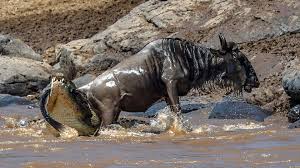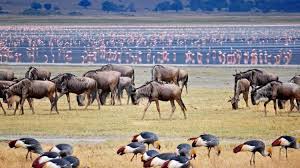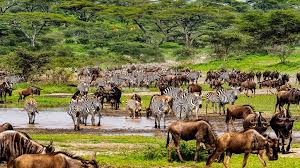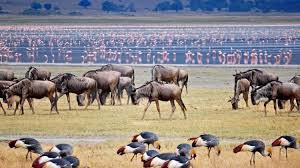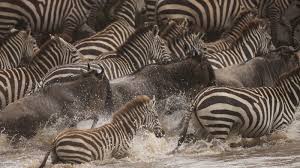Great Migration
The Great Wildebeest Migration is one of the most remarkable natural events on Earth, involving the movement of over two million animals across the plains of Tanzania and Kenya in a constant, circular journey. Each year, vast herds of wildebeest, accompanied by zebras, gazelles, and other antelopes, migrate across the Serengeti-Mara ecosystem in search of fresh grass and water, following seasonal rainfall patterns. This epic journey begins in the southern Serengeti, where calving takes place between January and March. During this period, thousands of calves are born every day, attracting numerous predators such as lions, cheetahs, and hyenas.
As the dry season approaches in April, the herds start moving northwest toward the Grumeti River, eventually reaching the Mara River by July. The river crossing is the most dramatic and dangerous phase of the migration, as animals plunge into crocodile-infested waters in a desperate bid to reach the Maasai Mara in Kenya. Many do not survive, falling prey to predators or drowning in the swift currents. After feeding on the lush grasslands of the Mara, the herds begin their journey back south around October, completing the migration cycle.
This incredible movement is not only a story of survival but also a key part of the ecological balance in the region. The migration supports a wide variety of wildlife and attracts thousands of tourists, playing a vital role in local economies and conservation efforts. The wildebeest migration is truly a living, moving wonder of the natural world, showcasing the resilience and interconnectedness of life on the African savanna.
